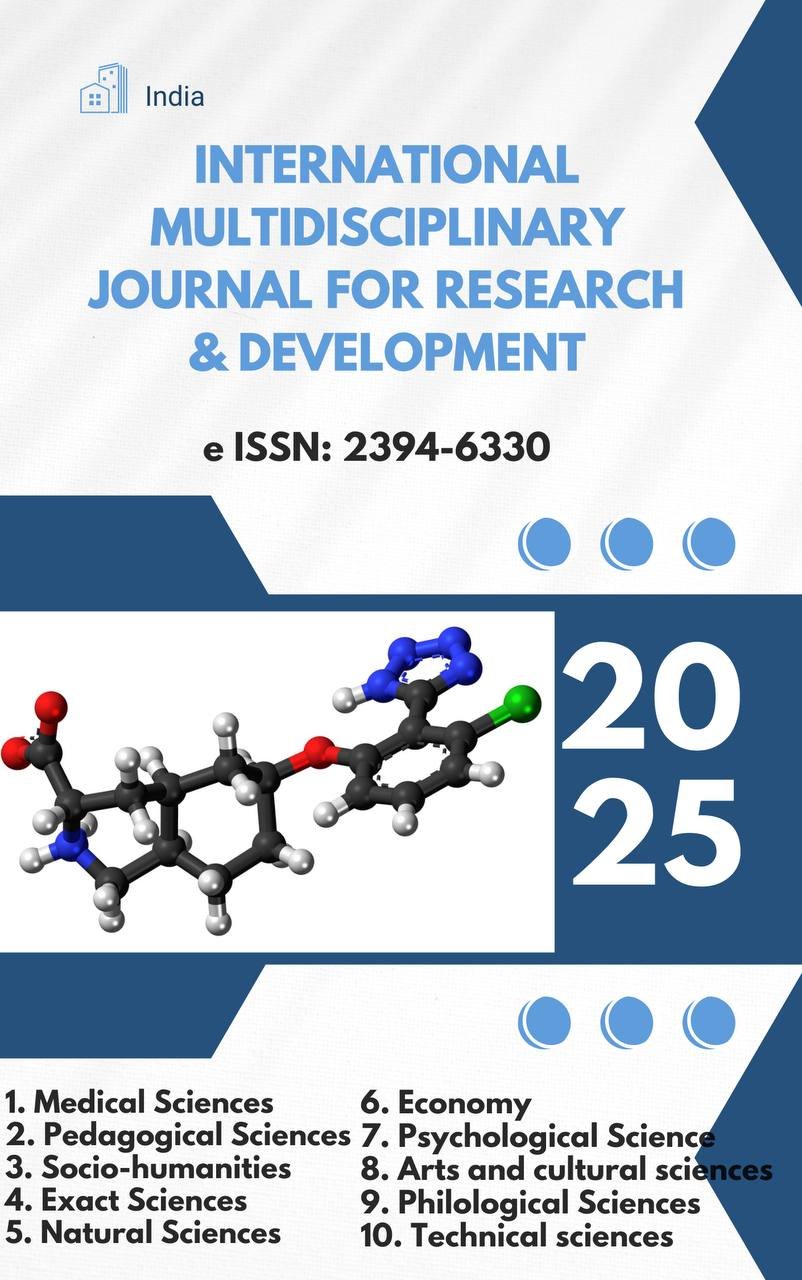AIR POLLUTION AND ITS ANALYSIS IN TASHKENT AND NAVOIY CITIES DURING 1995–2010

Abstract
This article analyzes the level of atmospheric air pollution in the cities of Navoiy and Tashkent during the period from 1995 to 2010. The study examines major pollutants including suspended particulate matter, sulfur dioxide (SO₂), carbon monoxide (CO), nitrogen dioxide (NO₂), nitrogen oxide (NO), phenol, hydrogen fluoride (HF), and ammonia (NH₃). The levels of pollution, trends of change, and main sources are compared between the two cities. Based on the results, recommendations are provided to strengthen environmental control and reduce air pollutants in both cities. The study holds significant scientific value for identifying pollution issues related to industrial activity, transportation, and urbanization in the regions.
Keywords
atmospheric pollution, Navoiy city, Tashkent city, suspended particulate matter, sulfur dioxide (SO₂), carbon monoxide (CO), nitrogen dioxide (NO₂), phenol, hydrogen fluoride (HF), ammonia (NH₃), environmental monitoring, air quality
References
- Center of the Hydrometeorological Service of the Republic of Uzbekistan – “Uzhydromet” (1995–2010). Annual Observations on Atmospheric Pollution. Tashkent.
- Environmental Protection Agency of the Republic of Uzbekistan. (2023). Annual Report on Air Quality. Tashkent.
- State Committee for Ecology. (2023). Results of Atmospheric Pollution Monitoring. Tashkent.
- Ministry of Health. (2023). Statistics on Respiratory Diseases. Tashkent.
- Karimov, A. (2018). Shahar atmosferasining ifloslanishi va ekologik xavfsizlik. Toshkent: Fan va texnologiya.
- Rahmonov, I. (2020). Atrof-muhit monitoringi va sanoat ifloslanishi. Toshkent: O‘zbekiston Milliy Universiteti nashriyoti.
- Smith, J., & Johnson, L. (2015). Urban Air Pollution and Public Health. Environmental Science Journal, 12(3), 45-59.
- World Health Organization (WHO). (2021). Air Quality Guidelines Global Update. Geneva.